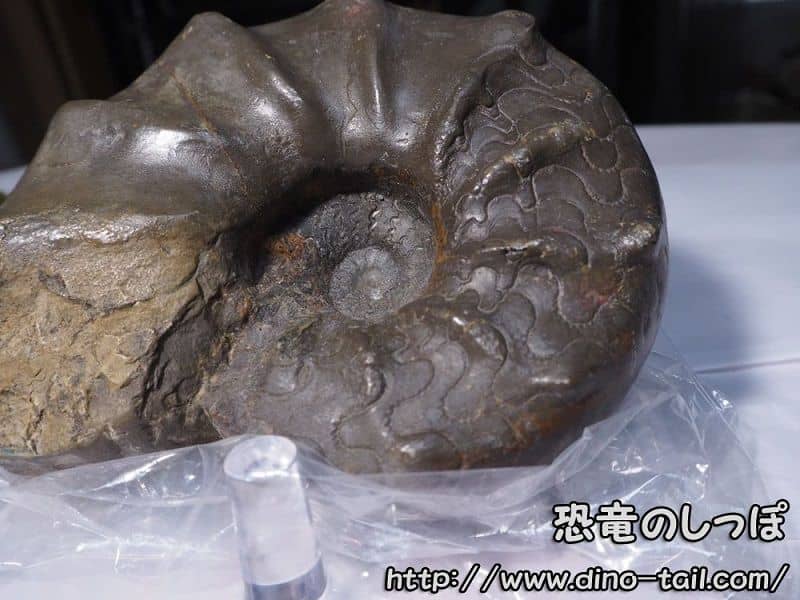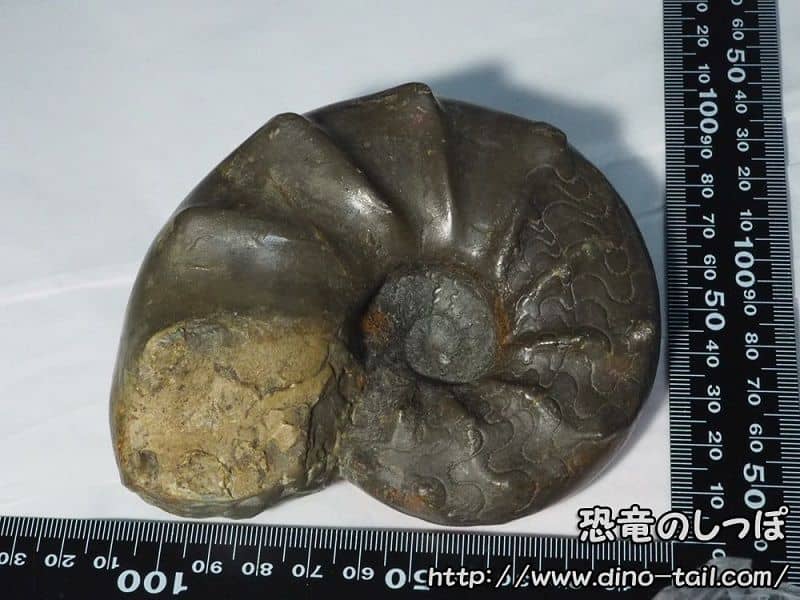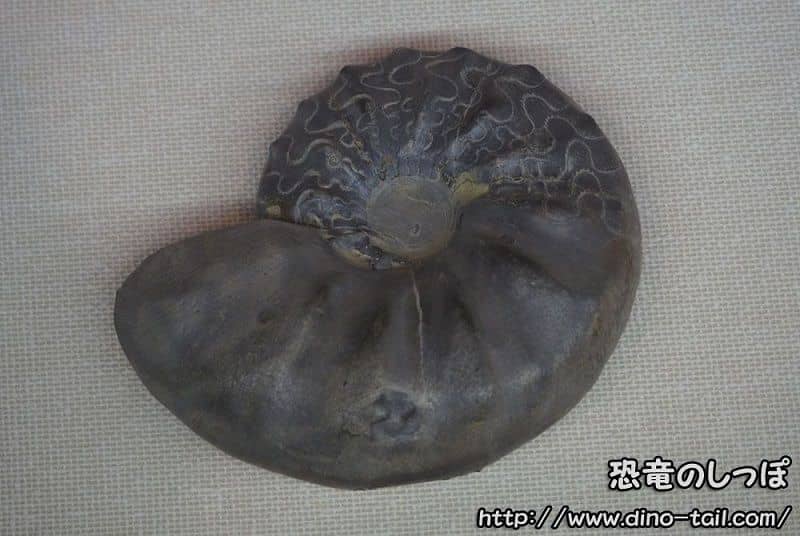About Ceratites
| Scientific Name (Genus) | Ceratites |
| Meaning of Name |
Horn-like stone
keras (horn) [Greek] + -ites (stone) [suffix] |
| Classification | Ammonoidea, Ceratitida, Ceratitidae |
| Period | Triassic |
| Sub-classification / Species Name |
Ceratites beyrichi
Ceratites boeckhi Ceratites elegans |
| Year of Paper Publication | 1825 |
Features and Scientific Importance
Ceratites is known as a representative ammonite of the Triassic period due to its characteristic suture line and global distribution.
An "Intermediate Form" in Suture Line Evolution
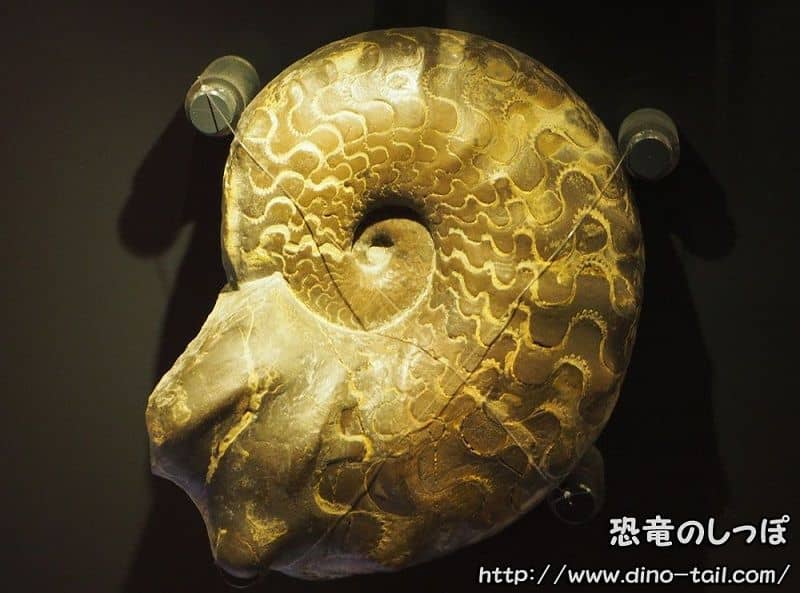
From Germany
The suture lines of ammonites evolved from simple to complex over time. The " ceratitic suture line " of Ceratites shows a beautiful "intermediate stage" of this evolution.
- Goniatitic (older type): Both saddles and lobes have a simple zigzag pattern.
- Ceratitic (intermediate type): Saddles are smooth, but lobes are complexly branched.
- Ammonitic (newer type): Both saddles and lobes are complexly branched like fern leaves.
This complex suture line is thought to have served to increase the strength of the shell.
Differences Between Males and Females
Two types of Ceratites with different shell shapes have been found. This is thought to be a difference between males and females (sexual dimorphism), and it is presumed that the larger, more inflated shells belonged to females (macroconchs), while the smaller, slender ones belonged to males (microconchs).
A "Ruler" for the Triassic
Ceratites fossils are found over a wide area, including Austria, Canada, China, France, Germany, Hungary, India, Italy, Israel, Russia, Turkey, and the United States, for a very limited time in the Middle Triassic. They flourished in seas all over the world. Therefore, geologists use Ceratites fossils to accurately determine the age of strata. They are a very important " index fossil " for measuring the Triassic period.
Recovery from Mass Extinction
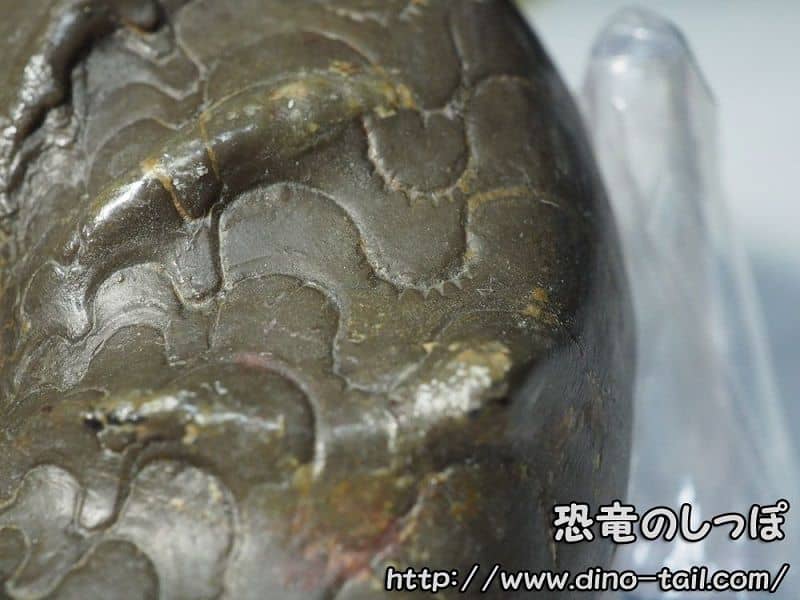
From Würzburg, Germany
My collection. If you look closely at the suture line, you can see that the saddles have even smaller serrations.
The Triassic period, when Ceratites lived, was immediately after the largest mass extinction in Earth's history , which occurred at the end of the preceding Permian period. In this great extinction, over 95% of all marine life became extinct, and ammonites were almost wiped out, with only a few species surviving.
The "Ceratitida" order of ammonites, including Ceratites, is a group that diversified explosively and flourished greatly in the process of life's powerful recovery from this "world of death." They are the descendants of "great survivors" who succeeded in becoming the new rulers of the vacant marine ecosystems.
Ceratites Stamp and Fossil Gallery
